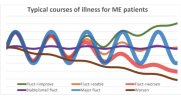ryanc97
Senior Member (Voting Rights)
The IGG curve dropped by the same pattern for non responders and responders. So IGG drop doesn’t seem to be the signal. As per the Dara trial.
However, could Lupus be a disease of the SLPC/plasmablast and CFS being of an LLPC?
That would explain why:
1. Lupus has memory, the process is generating new SLPCs every time and patients need to be on continuous treatment.
2. The one shot Dara treatment (not permanent) can induce remission in CFS by eliminating the faulty LLPC.
And of course, as for why there was “some” response in Rituximab P1 and P2, that is due to NK cell variation and also whether the faulty LLPC expressed CD20.
And for cyclo P1, it only kills LLPC in some patients. Since cyclo attacks dividing cells and LLPCs do not divide, it could be killing the supporting cast that provide nutrients to the LLPC itself?
So Lupus faulty is more upstream than CFS (which occurs at the last stage of the pipeline).
Both are lifelong but for diff reasons:
• Lupus has a continually renewing SLPC production
• CFS has a one time LLPC batch that lives for decades.
But the difference is in Lupus you have cells that continuously regenerate after being killed off, and in CFS you have a one time batch of cells that are immortal.
all this is just pure speculation of course. Just piecing things together given data. I’m not claiming anything here.
Lastly on subgroups I’m not keen on the idea personally, I believe any subgroup should be due to variation in the kind of AAB produced by the LLPC. Which of course any virus or stress can trigger.
However, could Lupus be a disease of the SLPC/plasmablast and CFS being of an LLPC?
That would explain why:
1. Lupus has memory, the process is generating new SLPCs every time and patients need to be on continuous treatment.
2. The one shot Dara treatment (not permanent) can induce remission in CFS by eliminating the faulty LLPC.
And of course, as for why there was “some” response in Rituximab P1 and P2, that is due to NK cell variation and also whether the faulty LLPC expressed CD20.
And for cyclo P1, it only kills LLPC in some patients. Since cyclo attacks dividing cells and LLPCs do not divide, it could be killing the supporting cast that provide nutrients to the LLPC itself?
So Lupus faulty is more upstream than CFS (which occurs at the last stage of the pipeline).
Both are lifelong but for diff reasons:
• Lupus has a continually renewing SLPC production
• CFS has a one time LLPC batch that lives for decades.
But the difference is in Lupus you have cells that continuously regenerate after being killed off, and in CFS you have a one time batch of cells that are immortal.
all this is just pure speculation of course. Just piecing things together given data. I’m not claiming anything here.
Lastly on subgroups I’m not keen on the idea personally, I believe any subgroup should be due to variation in the kind of AAB produced by the LLPC. Which of course any virus or stress can trigger.
Last edited:

